The exhibition "Depth" is one of the exhibitions of the Museum of the World Ocean, which unfolded in the building of the Storage Facility.
The exhibition "Depth" introduces visitors to collections of barometers, flow meters, hydrophysical probes, instruments and equipment for underwater surveys, studying depths and optical properties, deep-sea technology and many others.
A visit to this exhibition will give an answer to such questions as how to measure the depth of the ocean, what kind of submersibles are needed, is there life at maximum depth, etc.
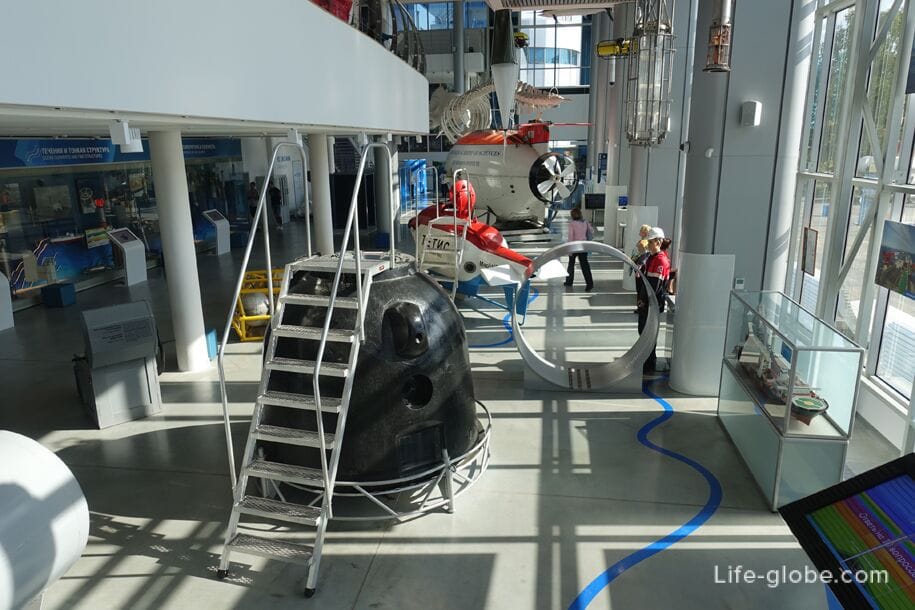
The exhibition collection includes both interchangeable exhibits, which alternate from time to time, and permanent ones.
The main and, perhaps, one of the most interesting objects of Depth are:
- one of the world's largest sperm whale skeletons;

- deep-sea habitable vehicle (GOA) "Mir-1". Mir-1 and Mir-2 were built in Finland by Rauma-Repola in 1987. In December of the same year, the vehicles were tested in the Atlantic at depths of 6,170 meters for the Mir-1 and 6,120 meters for the Mir-2.
In 1991 and 1995, with the help of Mir devices, films were shot on the legendary sunken ship Titanic, lying at a depth of 3,800 meters. As a result of the work, a large-format IMAX film Titanica and a Hollywood feature film Titanic were created.
On August 2, 2007, as part of the Arctic-2007 expedition, the world's first descent of Mir spacecraft was made at the geographical North Pole to a depth of 4,300 meters. During the dive, a titanium Russian flag and a capsule with a message to future generations were installed on the bottom. The devices withstood a pressure of 430 atmospheres. The achievements of this expedition are listed in the Guinness Book of Records.
In 2011, the Mir-1 and Mir-2 bathyscaphes conducted the first dive to the bottom of Lake Geneva, one of the largest, but practically unexplored reservoirs in Europe.
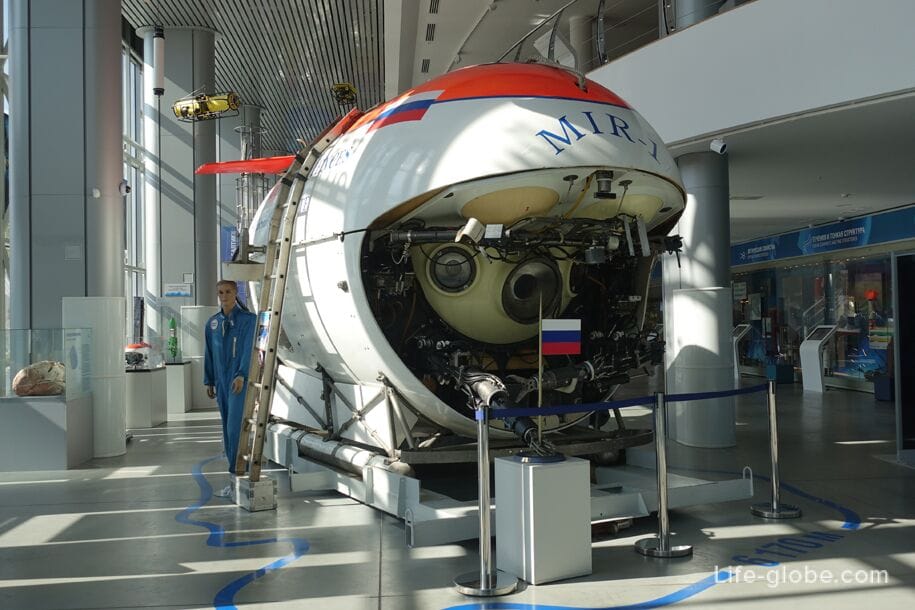
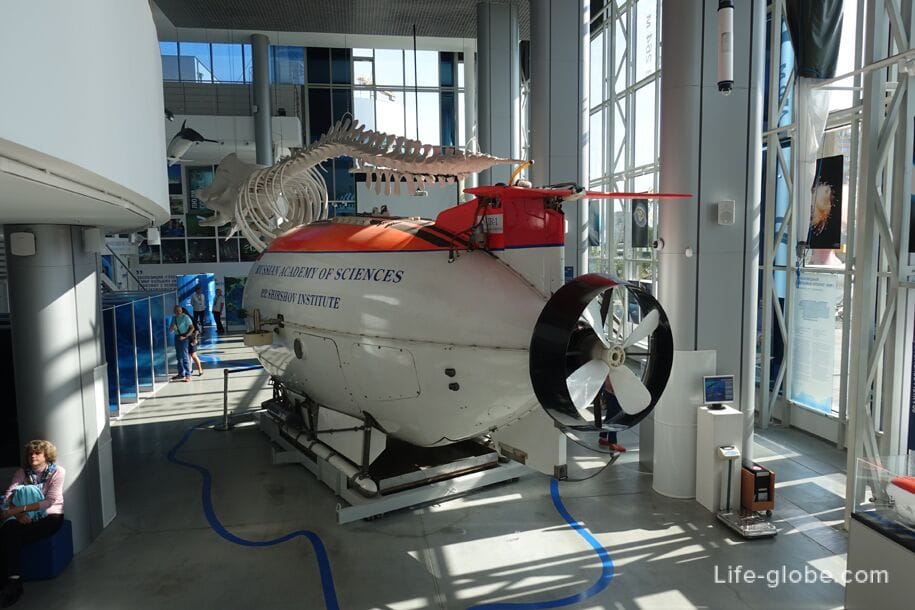
A series of glasses with gradual tinting, clearly showing how daylight penetrates to a particular sea depth and which inhabitants live at these depths.
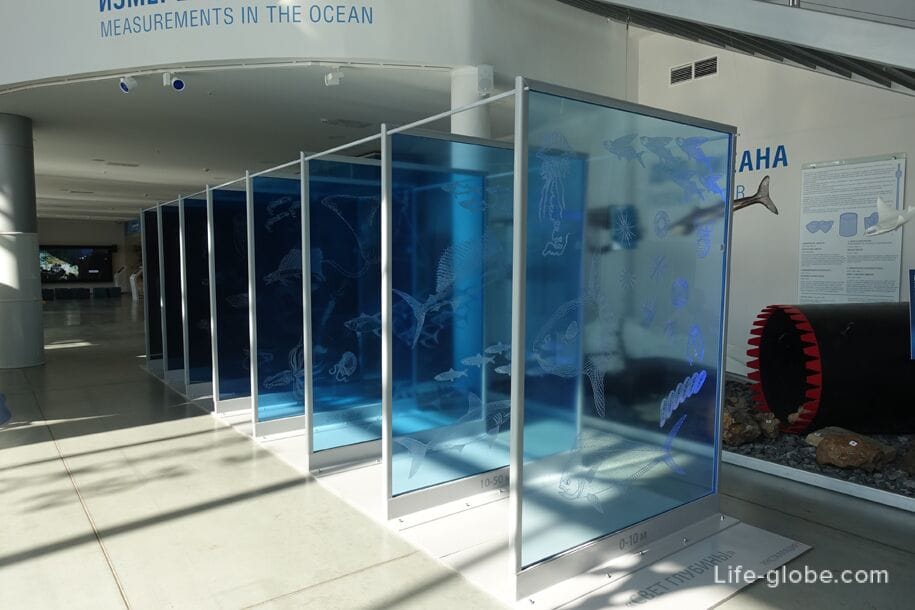
The exhibition laboratory of the earth, where various ground rocks from the world coast, test tubes and other laboratory devices are presented.
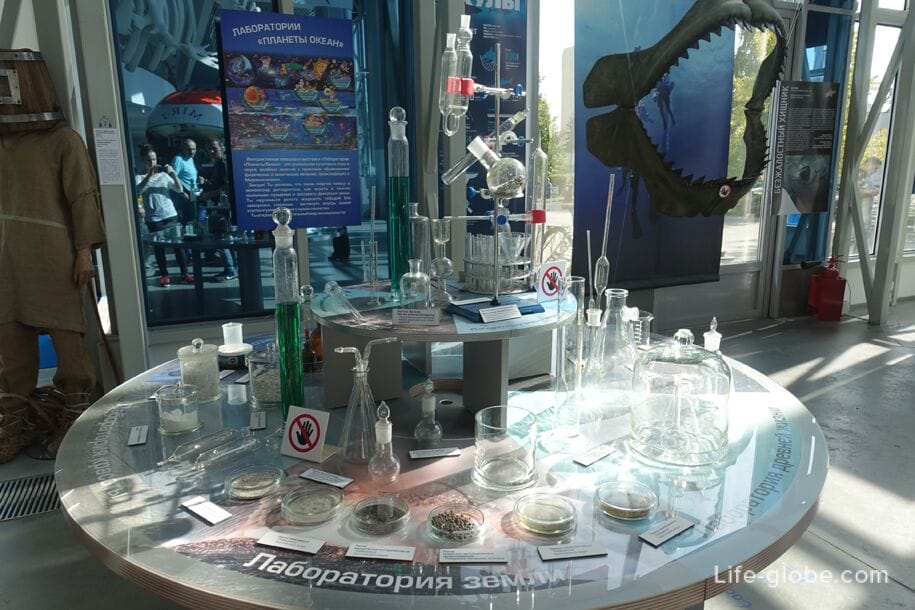
The exhibition "Inhabitants of marine waters" demonstrates sharks and their jaws, shells of crabs and other marine life.

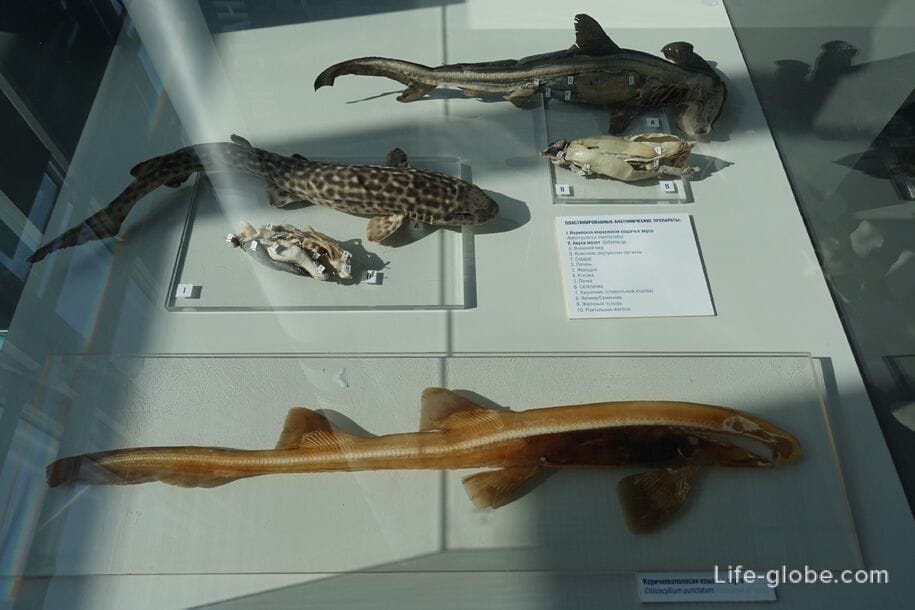
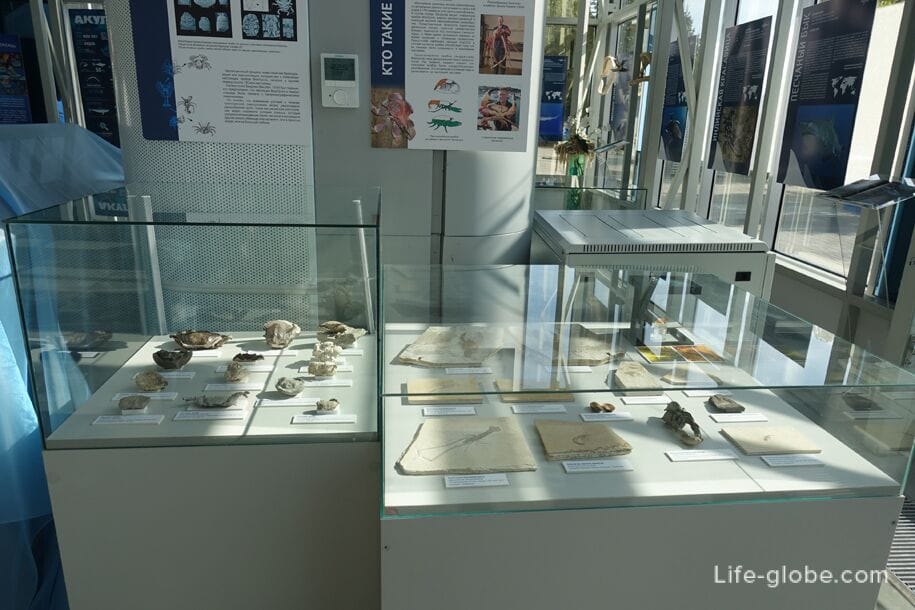
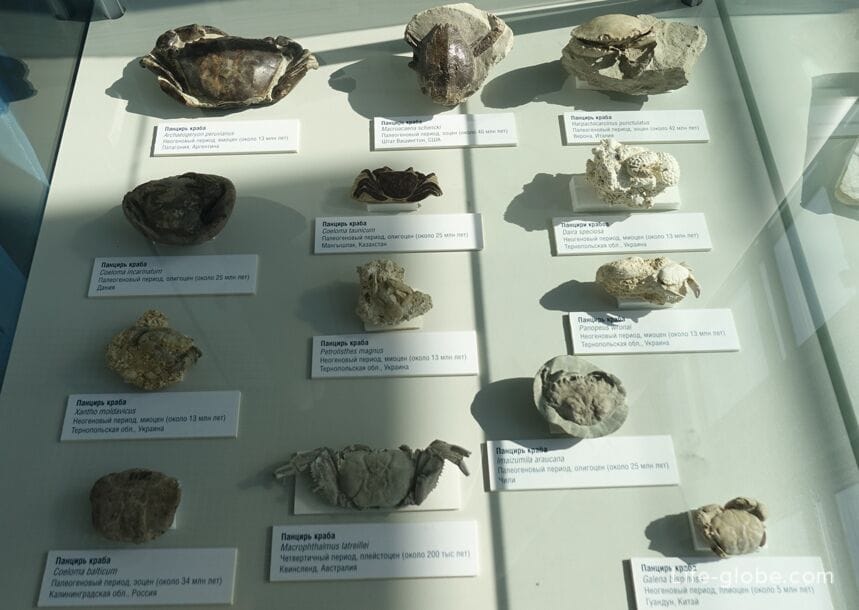
The heart of the gray whale (male, 10 meters long) was transferred to the museum in 2014 by the staff of Chukottinro.
The gray whale is the only whale species that has mastered bottom feeding. They feed at depths of 15-60 meters, scooping up benthic organisms and leaving "feeding pits" at the bottom of 2.5 meters long and 0.1 meters deep.
Gray whales make the longest seasonal migrations among mammals. In a year, a whale swims 12-19 thousand kilometers, and in 40 years of life, a whale overcomes a distance equal to the path from the Earth to the Moon and back.
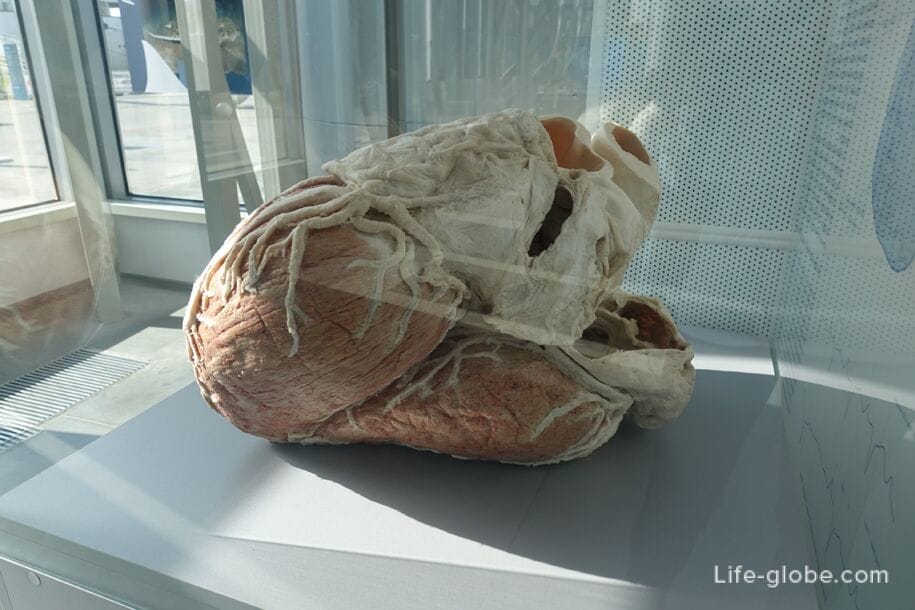
Do you want to measure your weight in blue whales, dolphins, herring and shrimp? And this is also possible. In the exhibition "Depth" there are interesting "Live scales" with which you can find out how much you weigh in marine life.
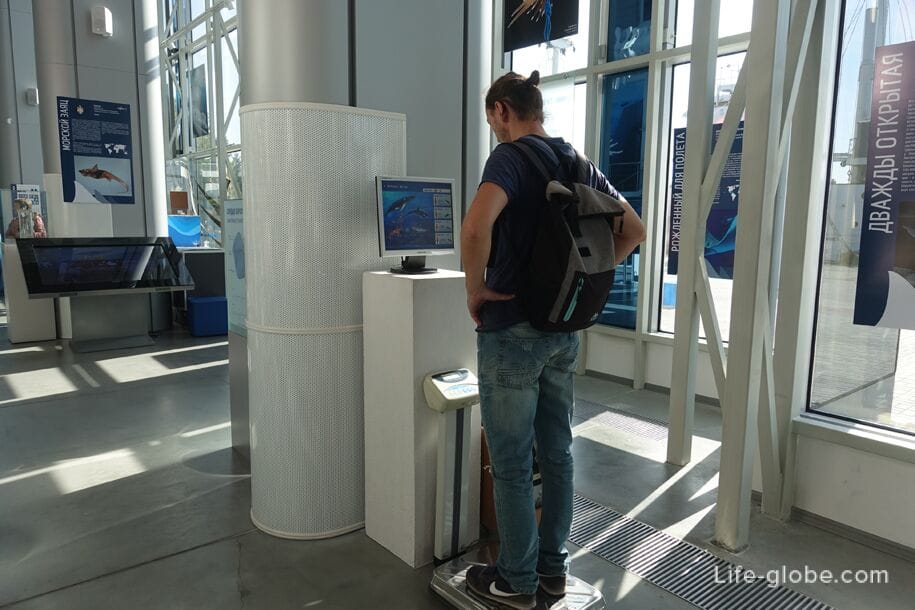
My weight))
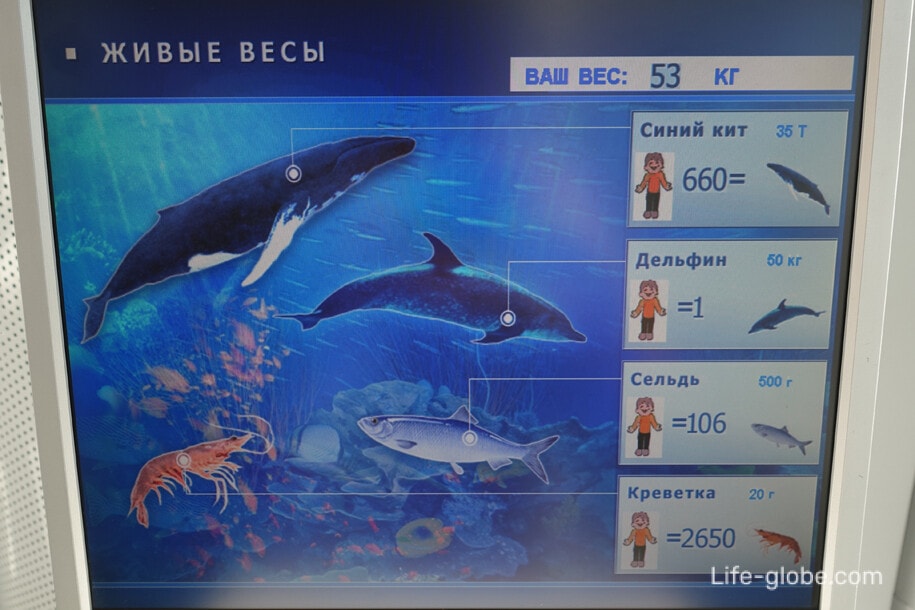
The mock-model of the deep-sea Deepsea Challenger is a bathyscaphe on which James Cameron plunged alone into the Challenger Abyss (Mariana Trench) on March 26, 2012.
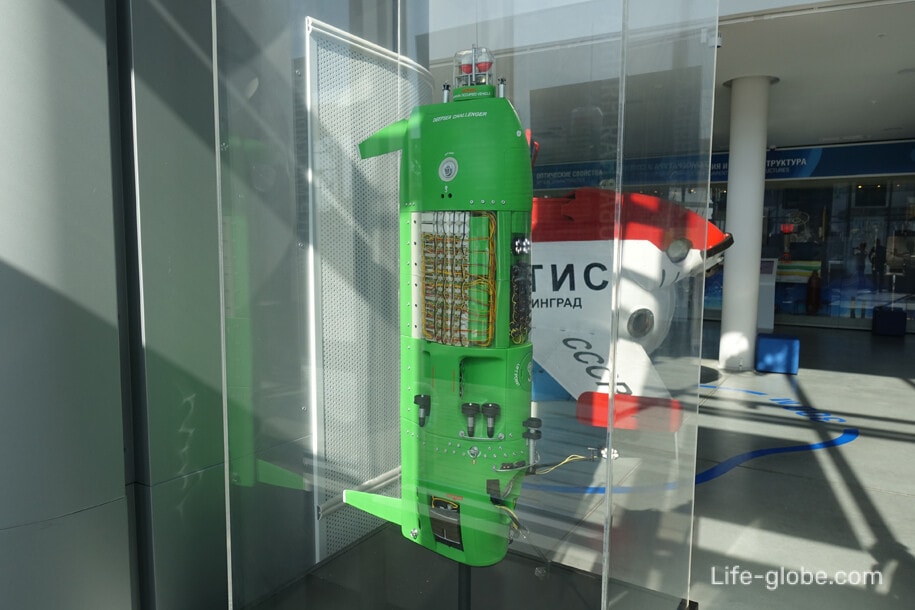
Towed underwater vehicle "Tethys" (observation camera). Such devices were intended to study the behavior of fish in the area of fishing gear operation.
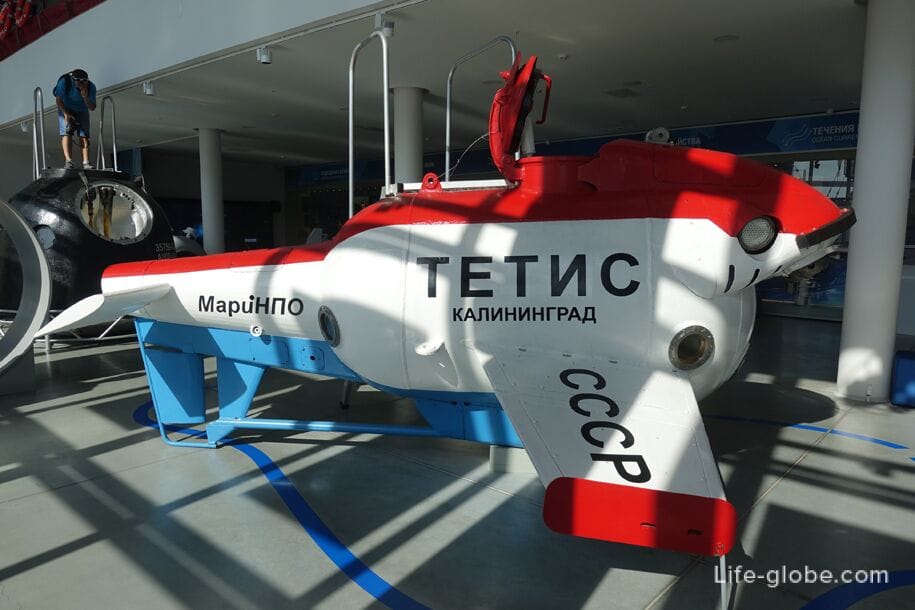
The descent vehicle (capsule) of the Soyuz spacecraft. A lander is a spacecraft or part of a spacecraft designed to launch a payload from the orbit of an artificial satellite or from an interplanetary trajectory and land gently on the surface of the Earth or another celestial body.
You can climb the stairs and look inside, thereby seeing in what conditions astronauts "spend time" in these devices.

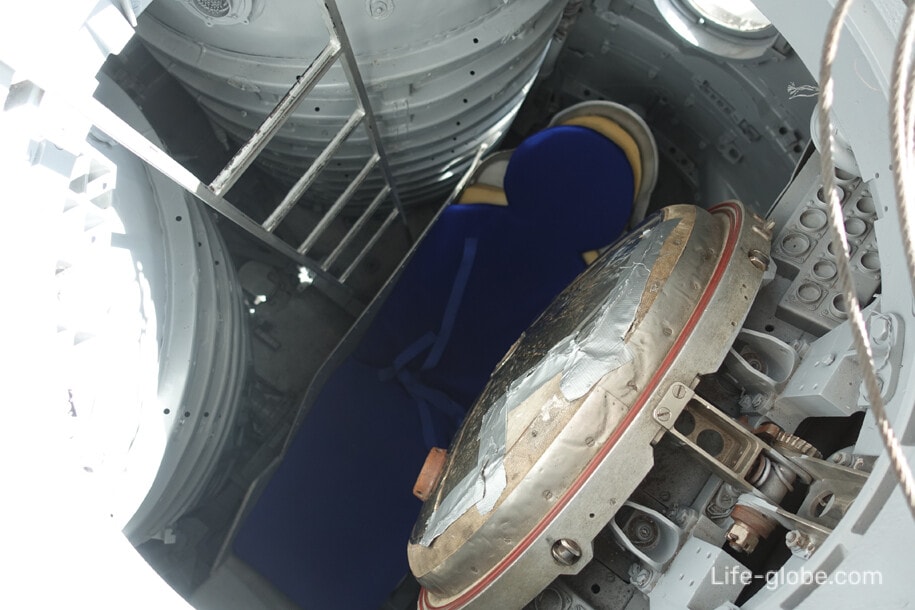
Diving pressure chamber, USSR, 1972. Currently, the pressure chamber is a necessary equipment for every diving vessel and a pressure of 10 atmospheres can be created in it, which corresponds to a pressure at a depth of 100 meters.
The pressure chamber simulates the presence of a person in conditions with more than atmospheric pressure. Such pressure chambers are used to train divers and treat caisson disease - damage to tissues and organs caused by a sharp decrease in pressure when inhaling a gas mixture. You can also feel like a student diver.
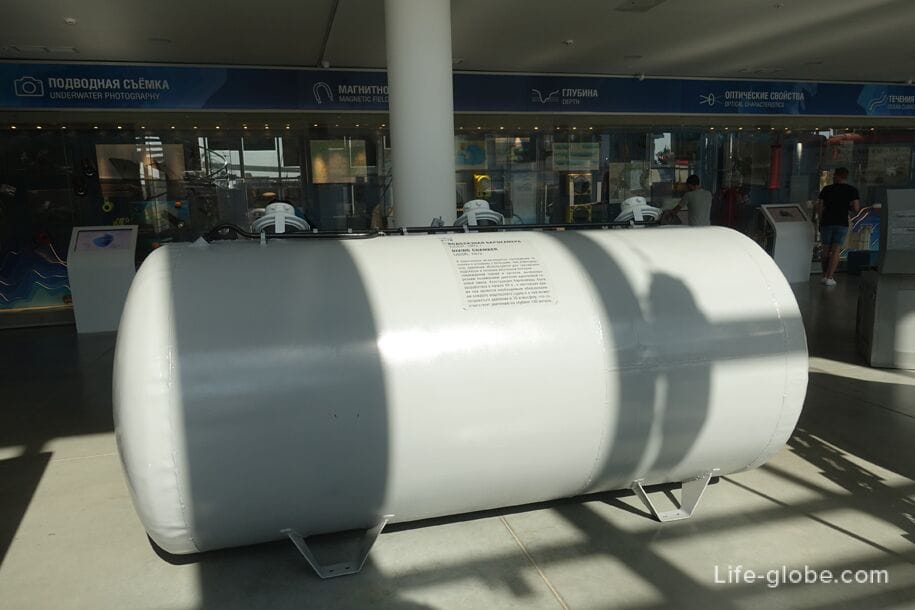
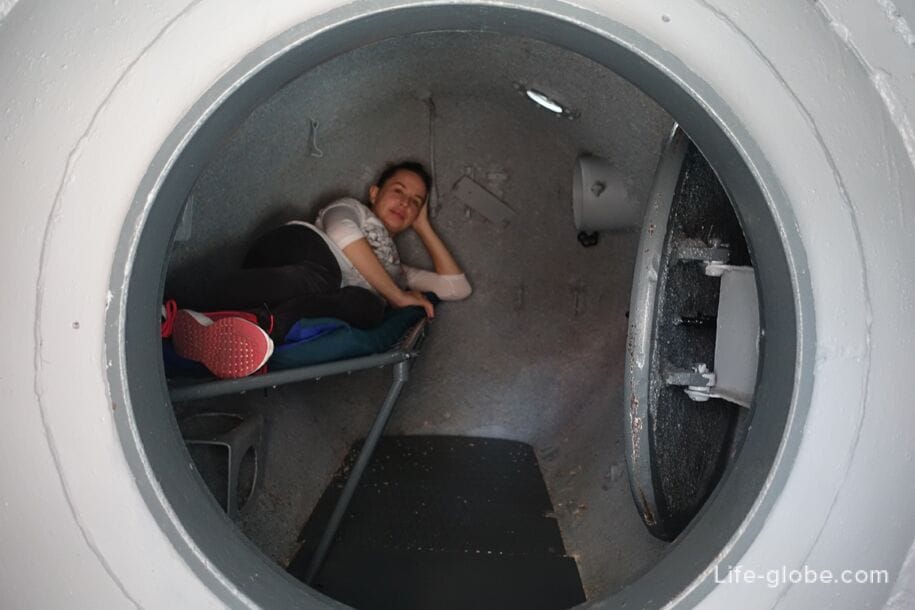
Diving suit invented in the 19th century

Display cases of measuring instruments, meteorological instruments, marine optics, navigation, etc.

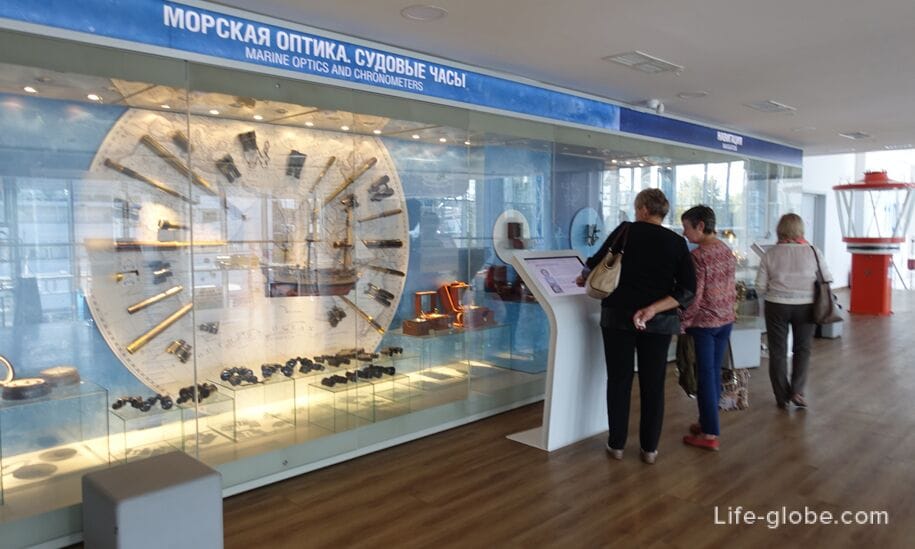

Simulator of entering the port on a boat, at the helm of which you can try your hand at controlling the ship.
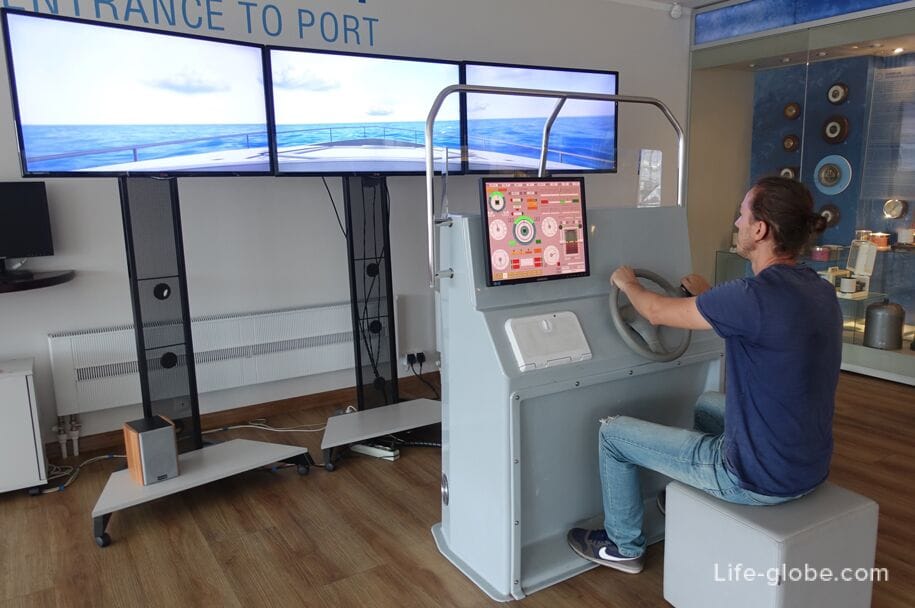
Salt bathyscaphe
In the Museum of the World Ocean, you can also visit the "Salt Bathyscaphe" (salt cave). Entrance from the exhibition hall "Depth, separate fee.
In the "cave" you can not only breathe in the cool salt air, but also see an exposition dedicated to salt, having made a "dive" 290 million years into the depths and found yourself at the bottom of the Perm Sea.
2.5 tons of salt slabs brought from the city of Berezniki were used in the salt room (Perm Region), where rock salt is extracted on an industrial scale.
This salt has features that make it unique! This is the age - the plates are more than 200 million years old; and secondly, they were found where the waters of the Perm Sea once splashed.
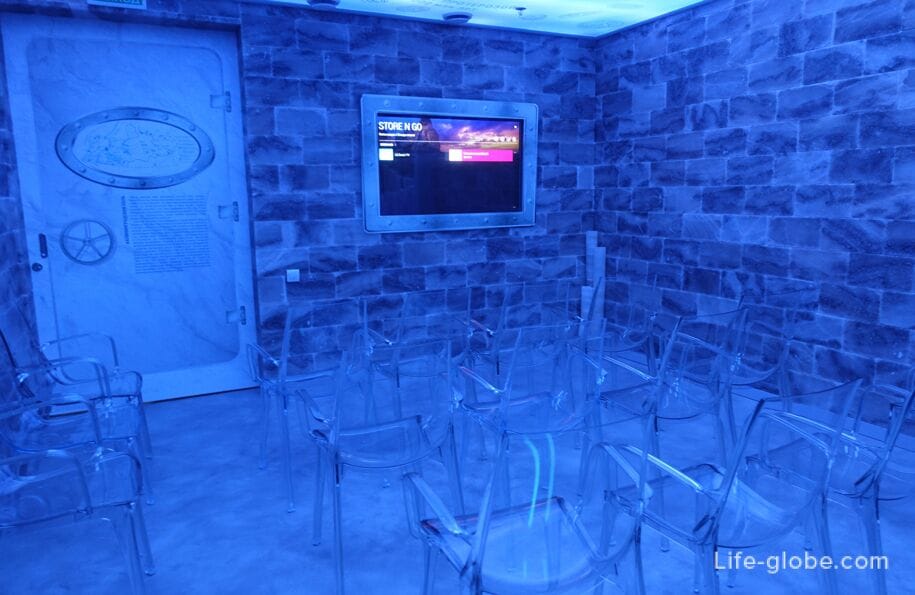
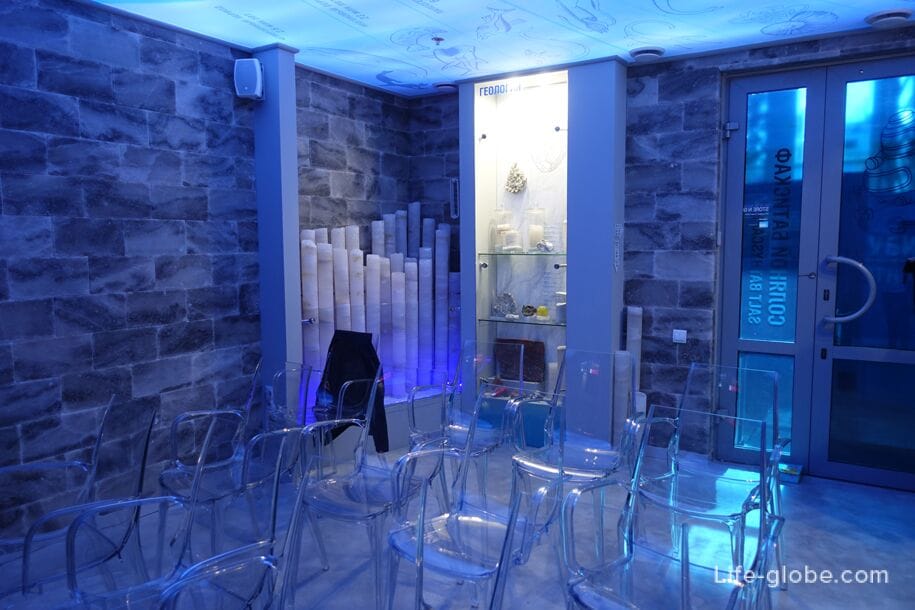
The exposition of the salt cave, bearing the name "Perm Sea. 290 million years in Depth", tells what kind of reservoir it is, when it existed and why it disappeared, as well as who lived in it.
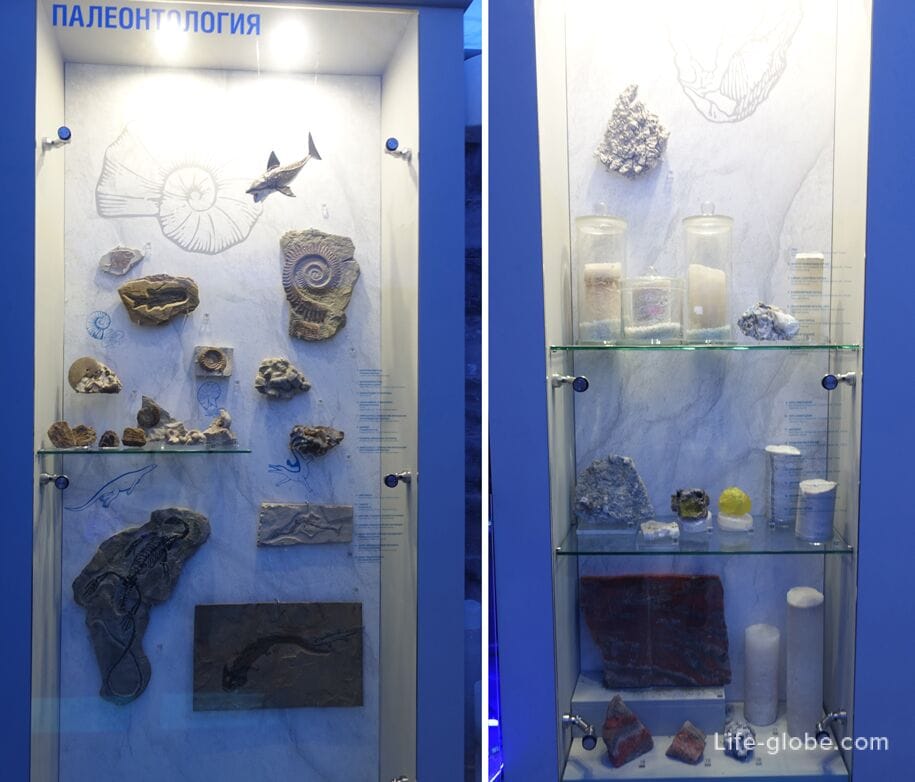
Practical information
The location of the exhibition "Depth" in Kaliningrad: the main building of the Museum of the World Ocean, the embankment of the Historical Fleet, address: Peter the Great Embankment, 1, Kaliningrad.
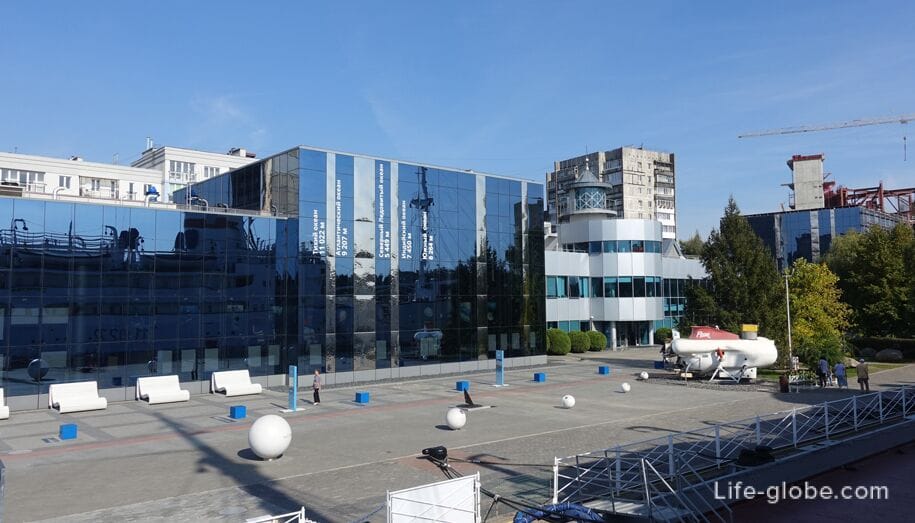
Visiting the exhibition "Depth" in Kaliningrad: you can find out the opening hours of the exhibition, excursions and ticket prices on the official website of the Museum of the World Ocean. Tickets can be purchased at the ticket offices of the Museum of the World Ocean.
Official website of the Museum of the World Ocean in Kaliningrad: world-ocean







